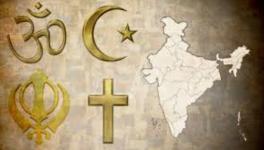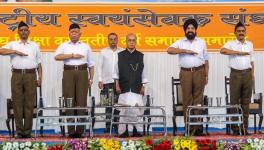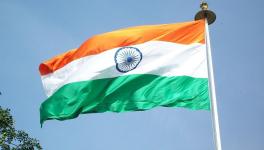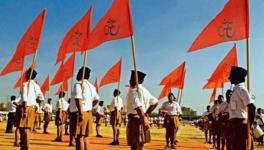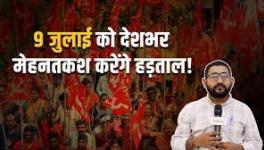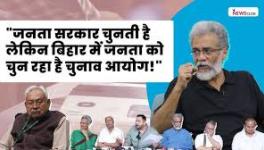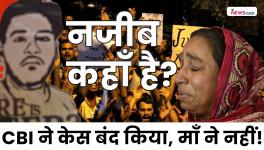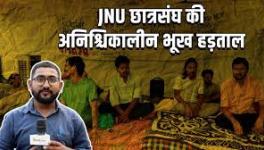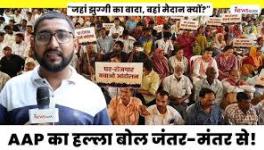Learning From History or Taking Revenge of Past?
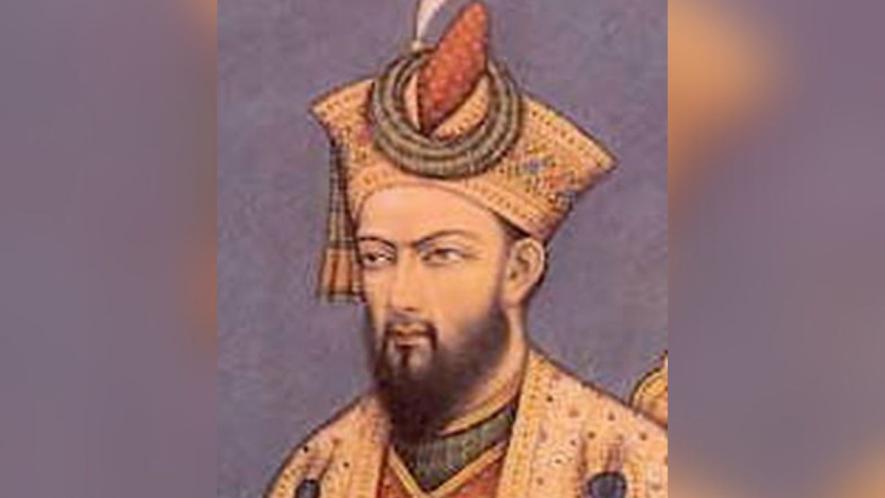
Image Courtesy: Flickr
Since the demolition of the Babri mosque by the Rashtriya Swayamsevak Sangh (RSS) combine in 1992, history has started dominating the social space. A particular version, which looks at history through the kings, their religion, is being imposed on the social common sense. This, too, is being done in a selective way.
Taking a step further now, communal forces are linking history with nationalism. Interestingly, the history of the era of kingdoms is being linked to nationalism, forgetting the fact that the nation-state is a modern phenomenon and the concept of India emerged as a parallel to the struggle against colonial powers.
Communal forces are today presenting Hindu kings who fought against Muslim rulers as patriots and great nationalists and as national icons. Nathuram Godse, who pumped three bullets into the chest of Mahatma Gandhi, in May it Please Your Honour, the book based on his testimony in the court, while commenting on Gandhi, had said that he was a “pygmy” in contrast to the “nationalism” of Chhatrapati Shivaji Maharaj or Maharana Pratap.
Today, those belonging to Godse’s ideology are reiterating the same in a more intensified form. Uttar Pradesh Chief Minister Yogi Adityanath recently launched a sharp attack “on those glorifying historical invaders, calling it an act of treason that 'new India' will not tolerate. The firebrand and Bharatiya Janata Party (BJP) leader's remarks came amid rising demands for the removal of Mughal ruler Aurangzeb's tomb in Maharashtra's Chhatrapati Sambhajinagar district.
On similar lines, Dattatray Hosabale, the sar karyavah (general secretary) of RSS, went on to question, “if ionising someone who was against the ethos of India was right. He asked why those who advocate Ganga-Jamuni culture (fusion of Hindu and Islamic cultural elements) never thought of idolising Dara Shikoh, the elder brother of Aurangzeb, who is said to be a pioneer of such an idea.”
All this is being said in the din of presenting Aurangzeb as an invader, a cruel villain. Let’s deconstruct the whole statement.
Who were invaders, was Aurangzeb an invader? The simple fact is that Aurangzeb had inherited the empire from his father, Shahjahan. The dynasty began with Babar, who was ruling in Kabul. Rana Sanga sent him a letter to come to defeat Ibrahim Lodi, the ruler of Delhi. As it happened, Babar landed up fighting with Rana Sanga and Ibrahim Lodi to rule over the Delhi Empire.
Even before Babar, we had Greeks, Kushans, Huns, and Shakas, who invaded from the North West and became part of the populace here. The Mughals were not the only rulers who came here; there were Khilji, Ghulam, and Ghaznavi who came here after defeating local kings.
India in the present form was not there, a nation ruled from Delhi. The kings were fighting with each other for power and pelf, while the interaction of different people Shakas, Huns, Kushans and Ahoms on the East created the mixed syncretism prevalent here.
Who is the icon of the Indian Nation? Yogi and Godse present Shivaji and Rana Pratap as national icons. Shivaji had many Muslim generals and officers in his administration. He fought against Aurangzeb, whose army was led by Raja Jaising.
Rana Pratap’s Haldighati bravery is worth eulogising, but does it represent a fight for Indian nationalism? His army had 3,000 soldiers, 1,000 of which were Pathans commanded by Hakim Khan Sure. Akbar, on the other side, had Mansingh as his Commander-in-Chief?
The battle was not on the issue of nationalism, it was for mansab (rank or position). Even if Hindu nationalists want to present those who fought against Muslims as national icons, the story is more complex. It was kings versus kings not Hindu versus Muslims!
It is not that all Muslims kings were cruel and Hindu kings were messengers of peace. Ashok is also infamous for his Kalinga war. The Chola kings’ war with Chalukya was again an example of many things, as winning the Chola’s army cut the head of defeated Chalukya king General Samudra Raj and cut the nose of his daughter.
Aurangzeb is being demonised for political purposes and a section of Muslims, intimidated and ghettoised due to the violence and issues like cow-beef, love Jihad, land jihad etc., are trying to find in a bit of self-prestige in him.
Talking of history, there are various ways of presenting it. The Hindu communalists over-project the kings as they want to hide the brutalities of caste-varna hierarchies and the subjugation of women in the past.
B R Ambedkar presents the history of India as a battle between Buddhism and Brahmanism. As per him, Buddhism emerged as a revolution against the Brahmanical caste-varna values. This made the spread of Buddhism as a major religion of India.
After Ashok spread Buddhism in South East Asia, it became a world religion as well. As per Ambedkar, this revolution was followed by a counter-revolution led by Pushyamitra Shung, who physically wiped out the Buddhists, and Buddhism was made to disappear from India till Ambedkar brought it back.
The brutalities inflicted on Dalits and women were a major phenomenon in India. Social reforms during the colonial period ensured that the insecurities were diluted, though they persist in some form even today. Is social reformer Raja Ram Mohun Roy not a great icon of India? What about Jyoti Rao Phule, Ambedkar’s struggle against the caste system? Are they not icons of India? And where will you place the tribe of Bhagat Singh and Ashfaqulla Khan? And Gandhi, Maulana Azad, Sardar Patel, Nehru and Subhash Chandra Bose, who are etched in the memory of India in letters of gold?
The overplaying of the cruelties of Muslim kings serves two purposes for the project of Hindu Nation. On the one hand, it targets the religious minorities. And, on the other, more importantly, it hides the brutalities of the Brahminical system (the base of Hindu nationalism) against the weaker sections of society.
From the Prime Minister to the Chief Minister of Maharashtra, all have appreciated the film, Chhaava. Now the Chief Minister is blaming the same for communal tension in Nagpur. Will such worthies promote films that show atrocities against Dalits and women in the past? As a matter of fact, recall that late BJP leader, Vijayaraje Scindia, had upheld ‘Sati’ (immolation of wife on the funeral pyre of her husband). At present Yogi-Fadnavis-Hosable are playing the communal card to the hilt!
The writer is a human rights activist, who taught at IIT Bombay. The views are personal.
Get the latest reports & analysis with people's perspective on Protests, movements & deep analytical videos, discussions of the current affairs in your Telegram app. Subscribe to NewsClick's Telegram channel & get Real-Time updates on stories, as they get published on our website.










